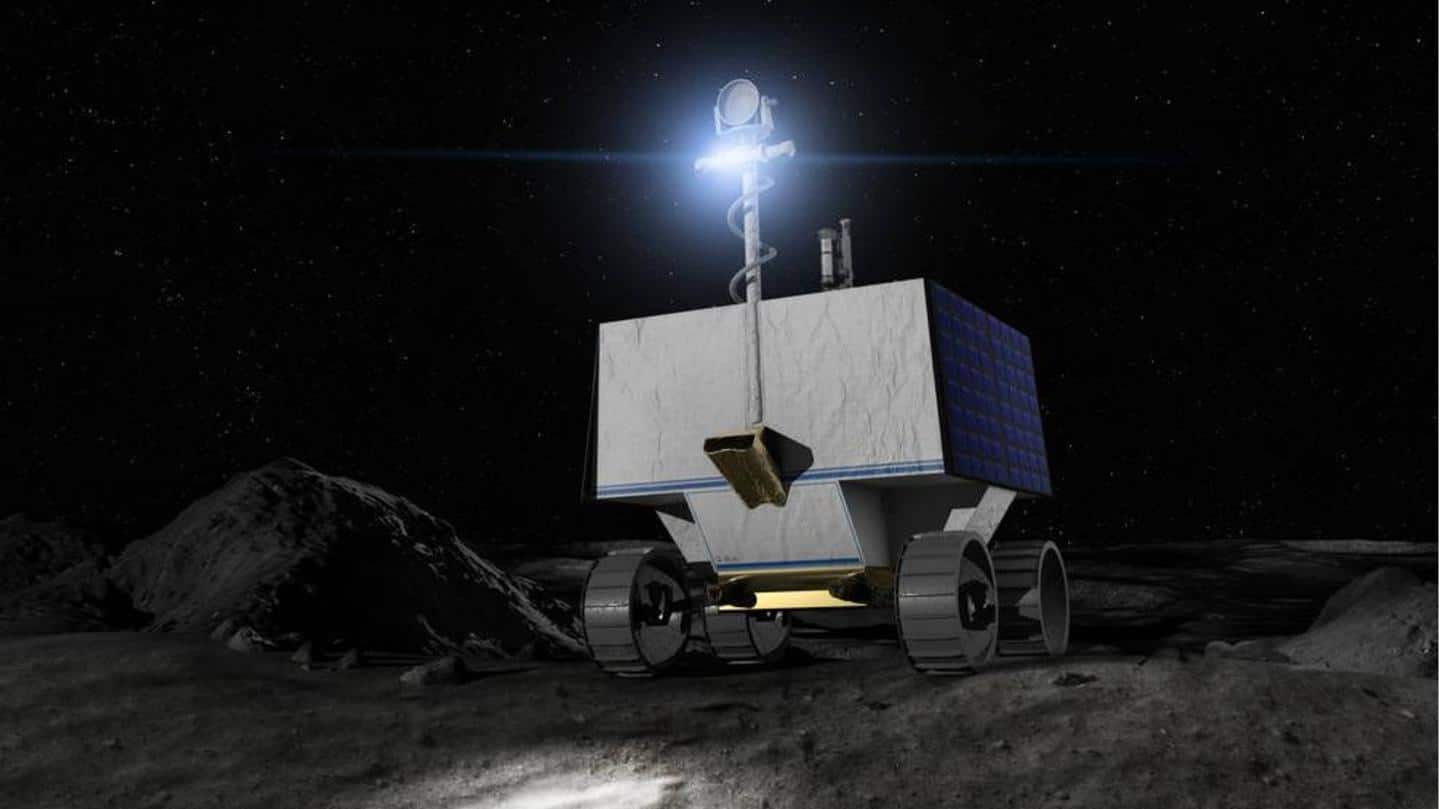
NASA's VIPER will scout for water on Moon's dark side
What's the story
NASA appears to have found enough evidence of water in lunar soil to warrant an exclusive mission as a prerequisite for sustained human presence on the Moon.
As a part of the Artemis program, the agency will launch a Volatiles Investigating Polar Exploration Rover (VIPER) late in 2023 to look for water on the dark side of the Moon.
Here are more details.
Acronyms galore
Four primary onboard tools will help VIPER carry out mission
Scientists believe water deposits are locked away as ice in soil called regolith.
VIPER will have these instruments on-board: The Regolith and Ice Drill for Exploring New Terrains (TRIDENT) hammer drill; the Mass Spectrometer Observing Lunar Operations (MSolo); the Near Infrared Volatiles Spectrometer System (NIRVSS); and the Neutron Spectrometer System (NSS).
NASA will test these devices ahead of the VIPER mission to reduce risks.
Challenges
VIPER rover launch, transit, landing responsibilities assigned to Pittsburgh-based Astrobotic
VIPER's launch, transit, and lunar landing responsibilities have been assigned to Pittsburgh-based firm Astrobotic using a task order under the agency's Commercial Lunar Payload Services (CLPS) initiative.
VIPER will be solar-powered. It will operate near the Moon's south pole, maneuvering quickly between extreme swings of light and dark as it explores the frigid dark side of the Moon.
In development
VIPER mission development expected to cost NASA $433.5 million
At present, the VIPER mission is expected to last three lunar days (100 Earth days). In a blog post, NASA said that the rover has now progressed to the mission development phase.
NASA has poured $433.5 million into VIPER's development. After all, this rover precedes Artemis project astronauts who would mark humankind's first return to the Moon since 1972.
Light on!
VIPER's mission similar to most other lunar, Martian rovers
Interestingly, VIPER will be the first lunar rover to make use of headlights for exploring the "permanently shadowed regions of the Moon".
Like most other rovers, it will collect and analyze samples of lunar soil and ice deposits if it finds any.
In related news, the European Space Agency is developing a spherical robot for exploring subterranean lunar caves that could hold ice deposits.